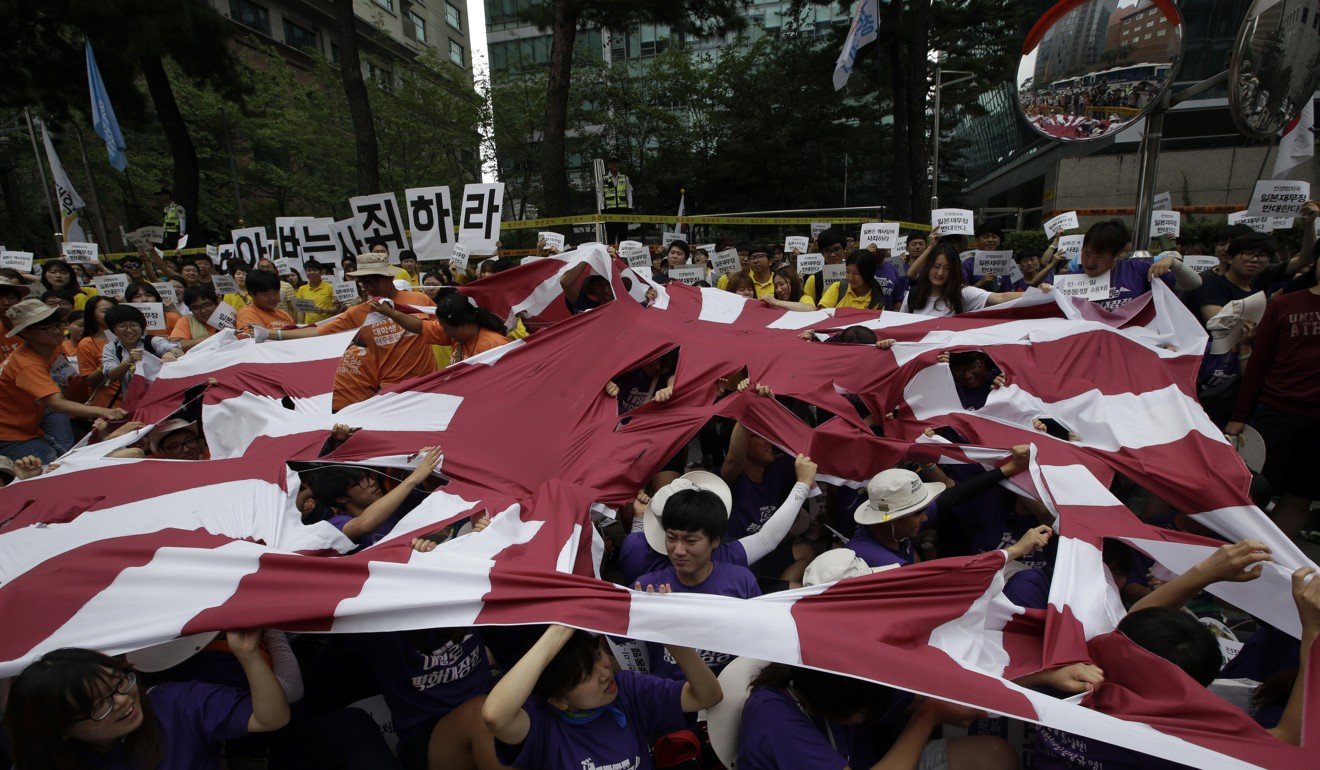
Rising Sun flag puts Korean, Japanese navies on collision course
Tokyo has refused requests from Seoul that its warship refrain from flying the controversial naval ensign – seen by many in Asia as a symbol of colonialism – when it docks in Jeju for an international event
South Korea is to host the International Fleet Review over four days from October 10 at Jeju Island, with warships from 15 nations, including China and the United States in addition to Japan, taking part.
Such is the lingering animosity towards the Japanese military however, that South Korean navy sources and the foreign ministry in Seoul have asked Japan’s Maritime Self Defence Force (MSDF) not to fly the kyokujitsuki naval ensign and instead fly only the Japanese and South Korean national flags.
Clearly this is a deeply sensitive issue for the Koreans – and anyone who was occupied by the Japanese as a colonial power or in the second world war
The ministry has urged Tokyo to “consider the public sentiment our people have over the Rising Sun flag”, but Japan insists it has no intention of acceding to its demands, with defence minister Itsunori Onodera saying the flag would be raised “as a matter of course”.
While under international law, the ensign is the correct flag for a Japanese warship to fly, the issue could cause problems “if the Korean side wants it to”, said Garren Mulloy, an associate professor of international relations at Daito Bunkyo University and an expert on security issues.

“Clearly this is a deeply sensitive issue for the Koreans – and anyone who was occupied by the Japanese as a colonial power or in the second world war. I would say that its ‘imperial experience’ is the biggest issue for Korea.
“Korean people were forced to bow before the Rising Sun flag as their national flag and it is not really a surprise that they equate this naval ensign with that experience,” he said.
“But under international maritime law, the MSDF is obliged to display the flag of their association, and that is it.”
Why is racism so big in Japan?
The Japanese navy originally adopted the kyokujitsuki in 1889 to differentiate military ships from civilian vessels and started flying the same flag on the first MSDF ships put into service after the end of the Allied Occupation in 1952.
Given that the South Korean navy is hosting the event, there are two possible solutions, Mulloy said. One would be for the Japanese warship to dock away from the other warships where it would attract less attention. Alternatively, it could remain at sea where its flag would be harder to see from the land.
Depending on how the request is framed, however, Tokyo may decline to comply and withdraw its forces from the event.
“Japanese warships flying this flag have docked in countless other ports around Asia for years and it has not caused a problem,” Mulloy said.
“I would think that it is less a case of the Korean navy protesting but more something from the government, the ruling party or its supporters. There have been protests in the past from Korea, but these things tend to go in cycles.”

